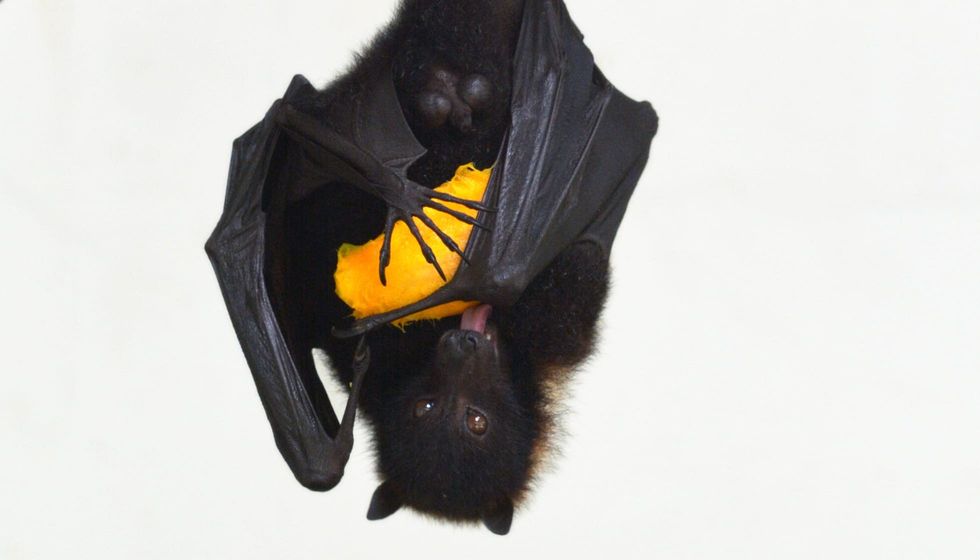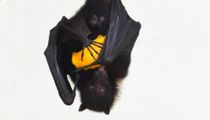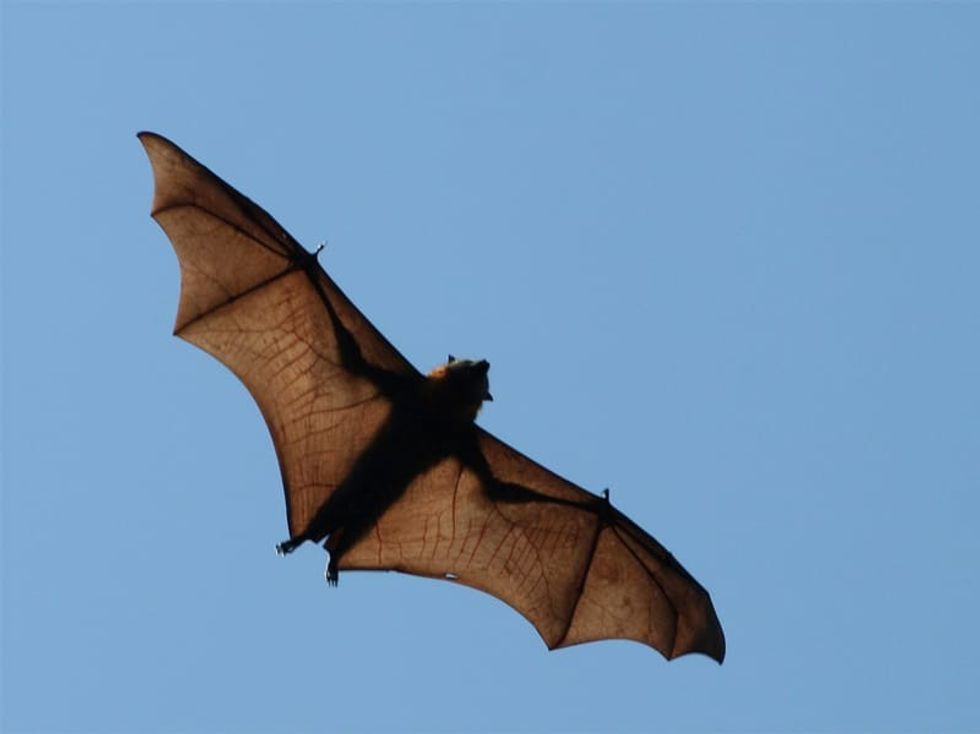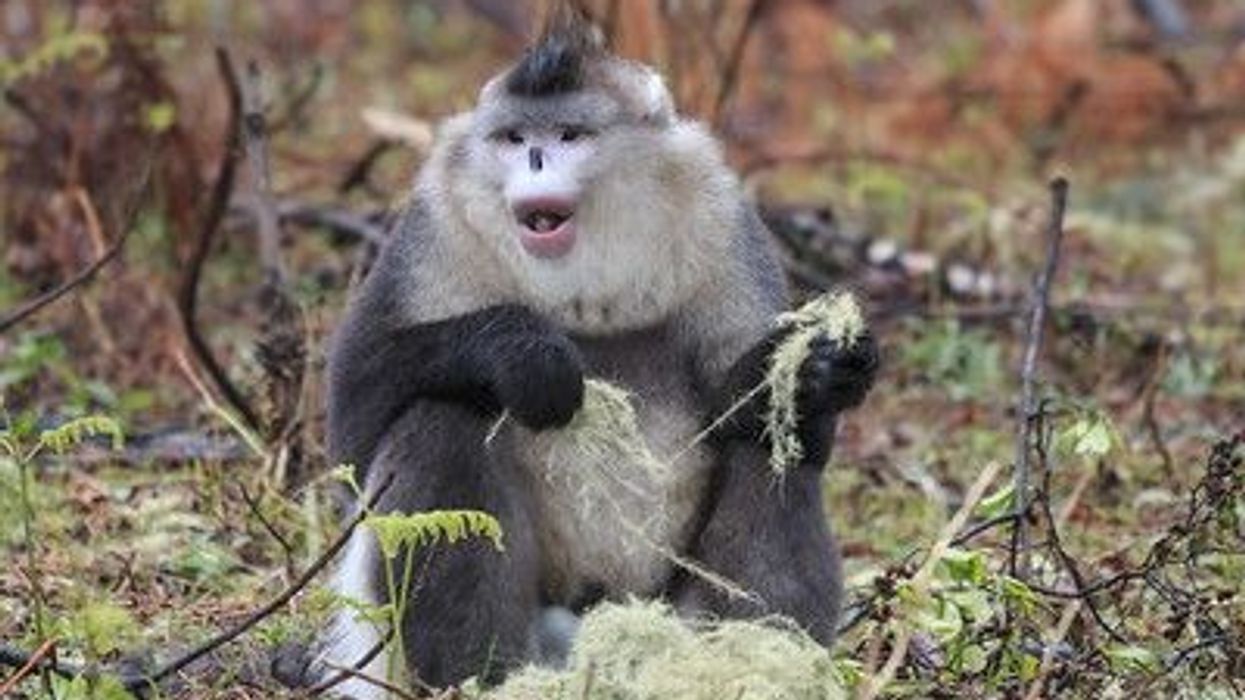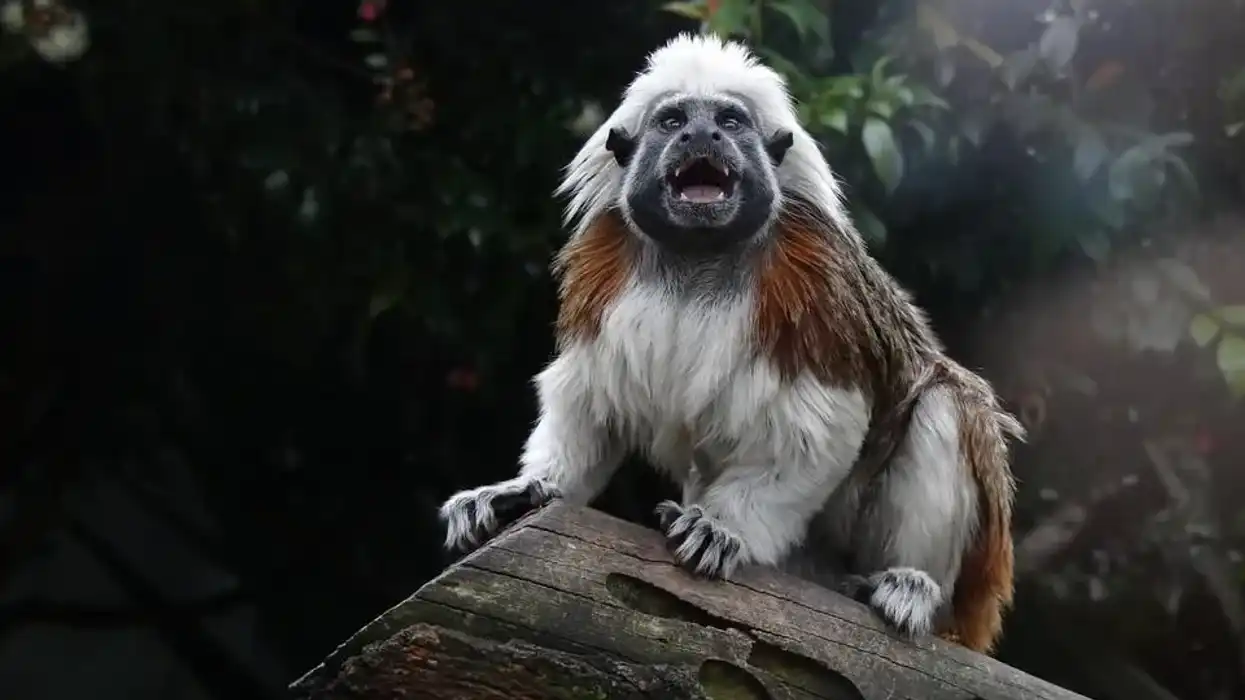A megabat species endemic to Fiji, the Fijian monkey-faced bat (scientific name: Mirimiri acrodonta) is known by several names such as the Fijian flying fox or the Fijian flying monkey. The species was discovered in the cloud forest of Fiji's second-highest mountain peak, Des Voeux Peak. Another scientific name of the species is Pteralopex acrodonta.
The average weight and length of the Fijian monkey-faced bat is around 0.5–0.8 lb (222-362 g) and 6.4-11 in (162-275 mm). The fur of the species is generally olive green or yellow in color and the mantle and head are quite soft and light brown in color.
The hair over the back and rump is shorter and females possess green fur while males have golden-colored fur here. Unlike other megabats, the species has orange eyes which also help to differentiate from other bats, and they also lack tails.
The species is primarily found in the montane forest regions of the island Taveuni. They are herbivores and feed on tough plants and nuts.
The IUCN has listed the species in the Critically Endangered conservation status and this endangered species is majorly affected by a loss of habitat.
The cloud forest within the Taveuni Forest Reserve is not protected at all and most of Fiji's forest reserves have been turned into mahogany plantations. Studies reveal that the population size of the species may be under 1,000 and several organizations such as the Australia and Pacific Science Foundation are studying the species currently.
Let's read more interesting facts about the Fijian monkey-faced bat, and if you find this article insightful, don't forget to check out exciting facts about different animals like the Rodrigues flying fox and the ghost bat.
Fijian Monkey-Faced Bat Interesting Facts
What type of animal is a Fijian monkey-faced bat?
The Fijian monkey-faced bat (scientific name: Mirimiri acrodonta) is an endemic species to the third-largest island of Fiji, Taveuni. The species is known by several names such as the Fijian flying fox or the Fijian flying monkey. Another scientific name of the species is Pteralopex acrodonta.
What class of animal does a Fijian monkey-faced bat belong to?
The Fijian monkey-faced bat (Pteralopex acrodonta) belongs to the class of Mammalia, the family of Pteropodidae, and the Mirimiri genus. The species formerly belonged to the Pteralopex genus but Mirimiri has been classified as a monotypic genus now.
How many Fijian monkey-faced bats are there in the world?
Studies reveal that there may be under 1000 Fijian monkey-faced bats in Taveuni, and the population of these mammals is majorly affected by a loss of habitat.
Where does a Fijian monkey-faced bat live?
The Fijian monkey-faced bat (Pteralopex acrodonta) is endemic to the third-largest island of Fiji, Taveuni. Most monkey-faced bats or Pteralopex species are generally found in the Solomon Islands, but this monkey-faced bat is found in Taveuni only.
What is a Fijian monkey-faced bat's habitat?
The Fijian monkey-faced bat (Pteralopex acrodonta) is generally found in montane cloud forest regions of the island Taveuni. The bat generally roosts in pairs on the trunks of large trees.
Who do Fijian monkey-faced bats live with?
Like other species of the Pteropodidae family, the Fijian monkey-faced bat roosts either alone or in small groups. They also come together during the breeding season.
How long does a Fijian monkey-faced bat live?
The average lifespan of Fijian flying fox bats is not known as of now, but bats of the Pteropodidae family generally live for around 30 years in captivity and in the wild.
How do they reproduce?
Like other species of the Pteralopex genus, the reproduction patterns of this mammal species are similar. Some bats mate once a year, while others have two seasonal cycles.
The Fijian flying fox bat also performs multiple courtship displays to attract its partner. The litter size and gestation period are not known, but females of the Pteropodidae genus are known to go through a gestation period of around four to six months. In Taveuni island, lactating females have been observed in May.
What is their conservation status?
The IUCN has listed the species in the Critically Endangered category.
This Critically Endangered species has been majorly affected by a loss of habitat. The cloud forest within the Taveuni Forest Reserve is not protected at all, while most of Fiji's forest reserves have been turned into mahogany plantations.
Studies reveal that the population size of the species may be under 1,000 and several organizations such as the Australia and Pacific Science Foundation are currently studying this island species, perhaps in a bid to understand the conservation measures that this rare species of animals requires.
Fijian Monkey-Faced Bat Fun Facts
What do Fijian monkey-faced bats look like?
The fur of the species is generally olive green or yellow in color. The mantle and head are quite soft and light brown in color and the hair over the back and rump is shorter.
Females possess green fur, while males have golden-colored fur. Unlike other megabats, the species has orange eyes which also help to identify and differentiate them from other bats, and they also lack tails.

*Please note that this is an image of a fruit bat, not a Fijian monkey-faced bat. If you have an image of a Fijian monkey-faced bat, please let us know at hello@kidadl.com.
How cute are they?
The orange eyes of the flying fox bat look quite scary. The mammal is also quite protective of its babies.
How do they communicate?
These Critically Endangered bats use similar methods of communication as other bats. Bats are known for using echolocation, while Pteropodids are known for being quite vocal. They perform multiple courtship displays during the breeding season. In general, they use numerous tactile, chemical, and acoustic cues to communicate.
How big is a Fijian monkey-faced bat?
The average weight and length of the Fijian monkey-faced bat is around 0.5–0.8 lb (222-362 g) and 6.4-11 in (162-275 mm), respectively. The average wingspan of a Fijian monkey-faced bat is not known as of now, but these bats are bigger than both hoary bats and red bats.
How fast can a Fijian monkey-faced bat fly?
The exact speed of a Fijian monkey-faced bat in flight is not known as of now, but monkey-faced bats remain quite active within their range.
How much does a Fijian monkey-faced bat weigh?
The average weight of this mammal is around 0.5–0.8 lb (222-362 g).
What are their male and female names of the species?
There are no specific names given to male and female bats, people generally refer to them as Fijian monkey-faced bats or a Fijian monkey-faced flying fox.
We can differentiate males and females by looking at the back of these bats as the hair over the back and rump is shorter in males, and females possess green fur while males have golden-colored fur.
What would you call a baby Fijian monkey-faced bat?
Young or juvenile Fijian monkey-faced bats are called pups.
What do they eat?
These bats are herbivores and the typical Fijian monkey-faced bat diet generally includes nuts and tough plants. They are often preyed upon by hawks, eagles, snakes, and large lizards.
Are they dangerous?
Like other bats, these bats can be really dangerous if someone tries to attack them. Bats are also associated with multiple viruses and it is always advised not to get too close to them.
Would they make a good pet?
The population of the species has been declining recently. Also, they are endemic to the island of Taveuni, Fiji, where it is not allowed to keep them as a pet in captivity.
Did you know...
Since they are native to Fiji and their face resembles the face of a monkey, they came to be known as Fijian monkey-faced bats.
Is the Fijian monkey-faced bat endangered?
Yes, the IUCN has listed the species as Critically Endangered. Also, the current population seems to be unstable and their population decline has made the Fijian monkey-faced bat one of the rarest bat species in the world.
Since the species is endemic to Fiji, it is very important to protect its limited habitat range. Several organizations such as the Australia and Pacific Science Foundation are studying the species currently.
Is the Fijian monkey-faced bat a keystone species?
Yes, Fijian monkey-faced bats are considered a keystone species as they provide seed dispersal services to a wide range of plants.
Here at Kidadl, we have carefully created lots of interesting family-friendly animal facts for everyone to discover! Learn more about some other mammals from our fruit bat facts and Mexican free-tailed bat facts for kids.
You can even occupy yourself at home by coloring in one of our free printable Fijian monkey-faced bats coloring pages.
*Please note that this is an image of a lesser short-nosed fruit bat, not a Fijian monkey-faced bat. If you have an image of a Fijian monkey-faced bat, please let us know at hello@kidadl.com.


